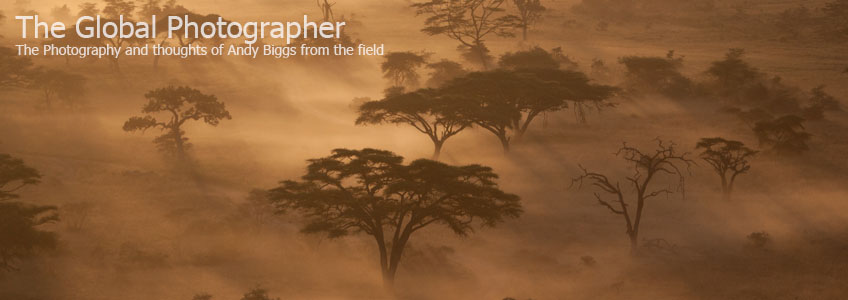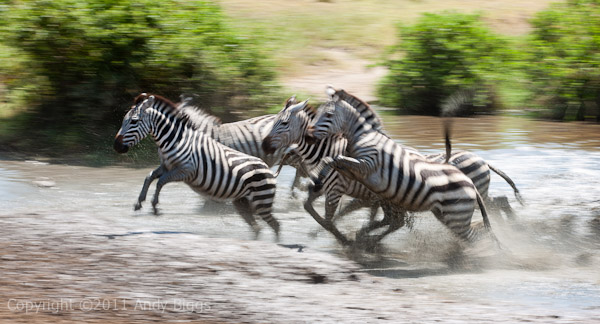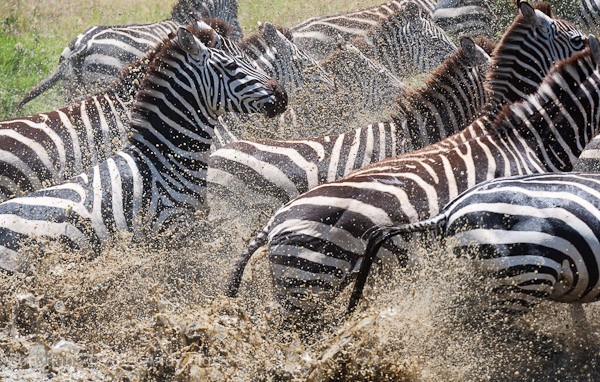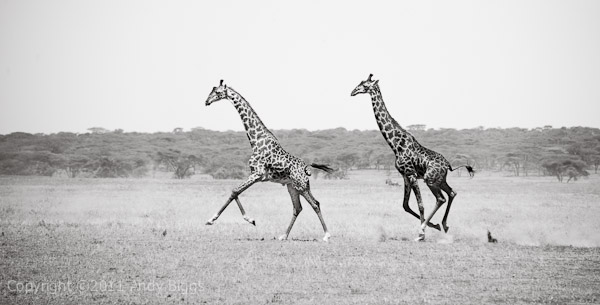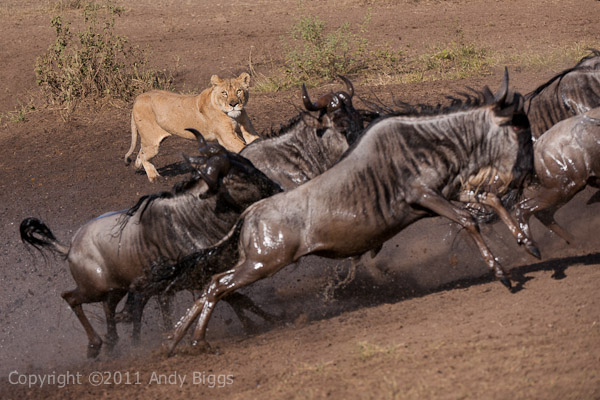
The Chase
Serengeti National Park, Tanzania. March 2011
Nikon D3x, 200-400mm, 1/1600 @ f/5.6, ISO 400
Ok, where do I even begin? Let me first start off by saying that I am not going to write down all that happened today, other than one amazing wildlife moment. It was a moment that is up there with my best wildlife viewing moments over the past 10 years of running photo safaris in Africa. It was that kind of cool moment. So here goes.
We saw a kill. A good one, at that. We were sitting at a good watering hole, watching zebras and wildebeest come in for water. After about half an hour we saw a huge splash in the water as a lioness came running out of the bushes to chase the subjects were just photographing. I completely missed the shots, as we were in a bad location to shoot the lioness, but we did track her down afterwards. We noticed she was very very interested in the wildebeests that lay beyond the water, and she started stalking back towards the water’s edge. We moved our vehicle into position to anticipate where she would hunt, and right as we settled down…….POW! She was chasing after a couple of older wildebeest in hopes of having a nice meal.
I grabbed a few frames before she ran within my minimum focusing distance on my Nikon 200-400mm lens, as you can see in the following frame.
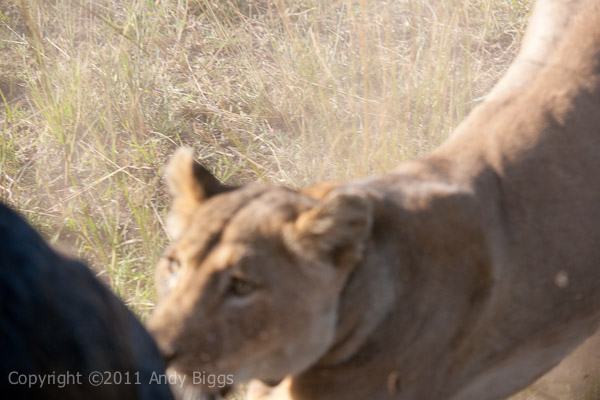
Whoops. The minimum focusing distance on the 200-400mm is only 6 feet. Nothing like a lioness chasing a wildebeest only inches away.
The lioness grabbed the wildebeest by the throat only a few feet from the back of my Land Rover, and the struggle only lasted about a minute as the wildebeest was brought to the ground. We had to maneuver the vehicle to be able to shoot from the windows, as the lioness was still trying to finish off the job, so to speak. Autofocus was a challenge, for sure, as there was waving grass right in front of her face. I had to tweak the focus manually, as autofocus just does not work in these situations. The best thing to do is to tweak it manually and stop down a little bit to make sure that you have enough depth of field in case you missed the focus.
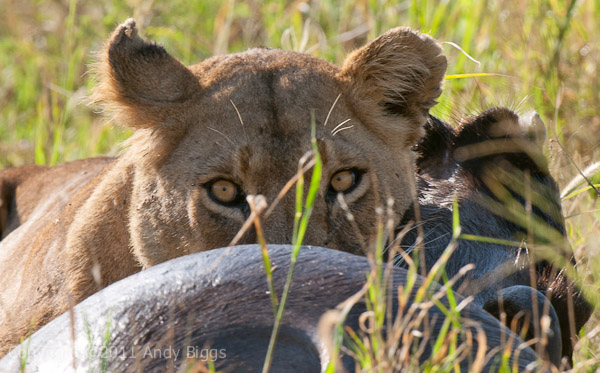
…And the final shot
Lesson learned: always be ready for the action, and always decide ahead of time which lens you are going to use. The 70-200mm would not have been ideal for the chase, however it might have worked when they ran by the vehicle. That wasn’t ‘the shot’ I was after, so my 200-400mm was chosen and I went with it.
The rest of the day was also amazing, but in a very very different way.
 Sunday, March 20, 2011 at 09:11AM
Sunday, March 20, 2011 at 09:11AM 